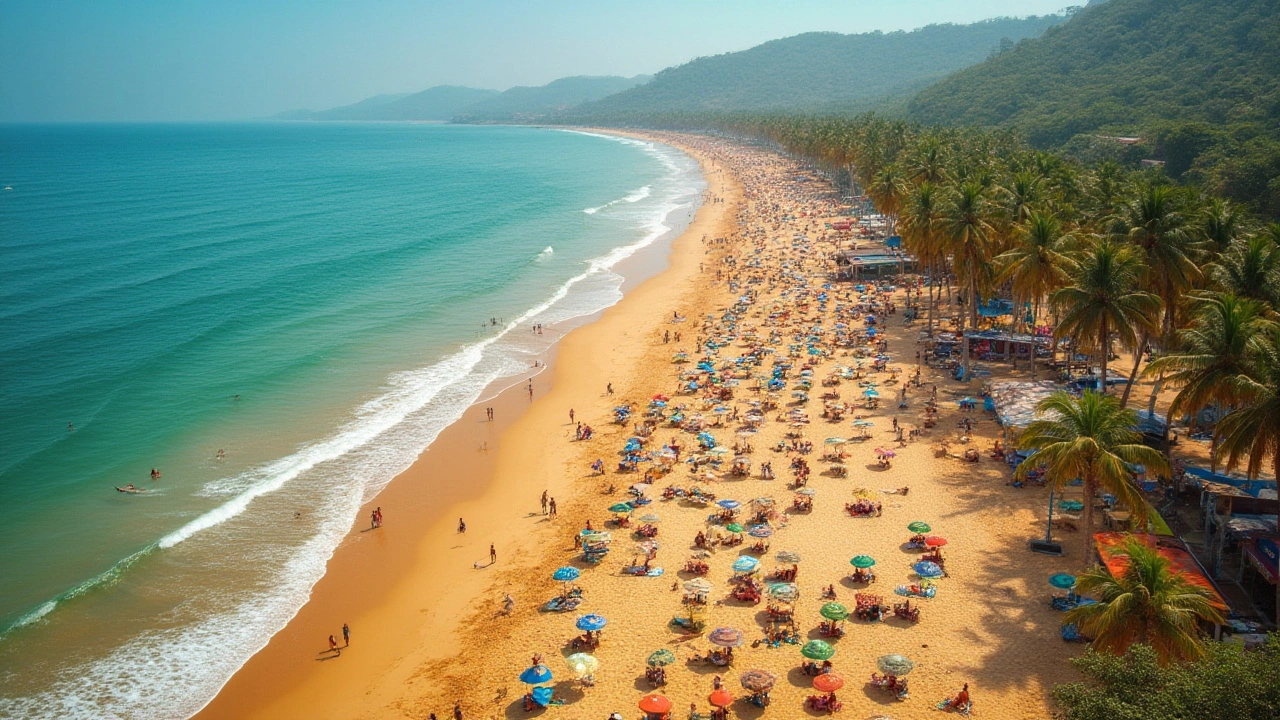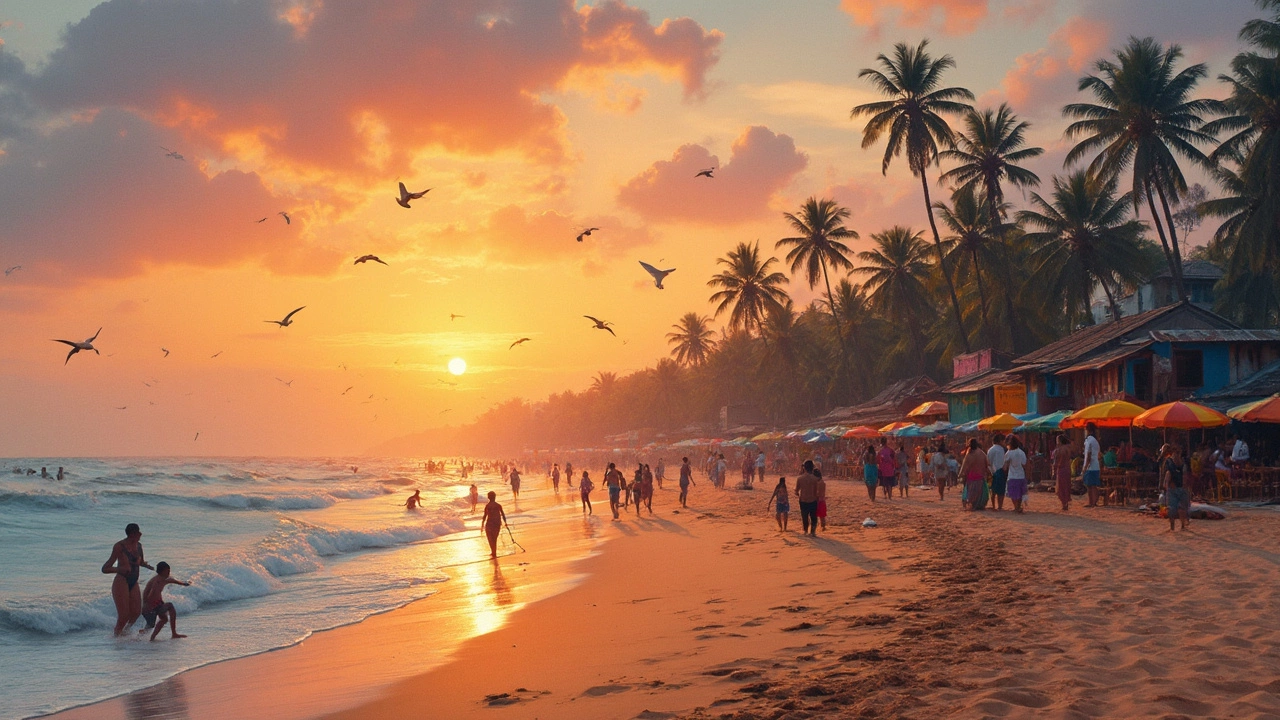Are Goa Beaches Safe and Swimmable? The Real Guide to Swimming in Goa
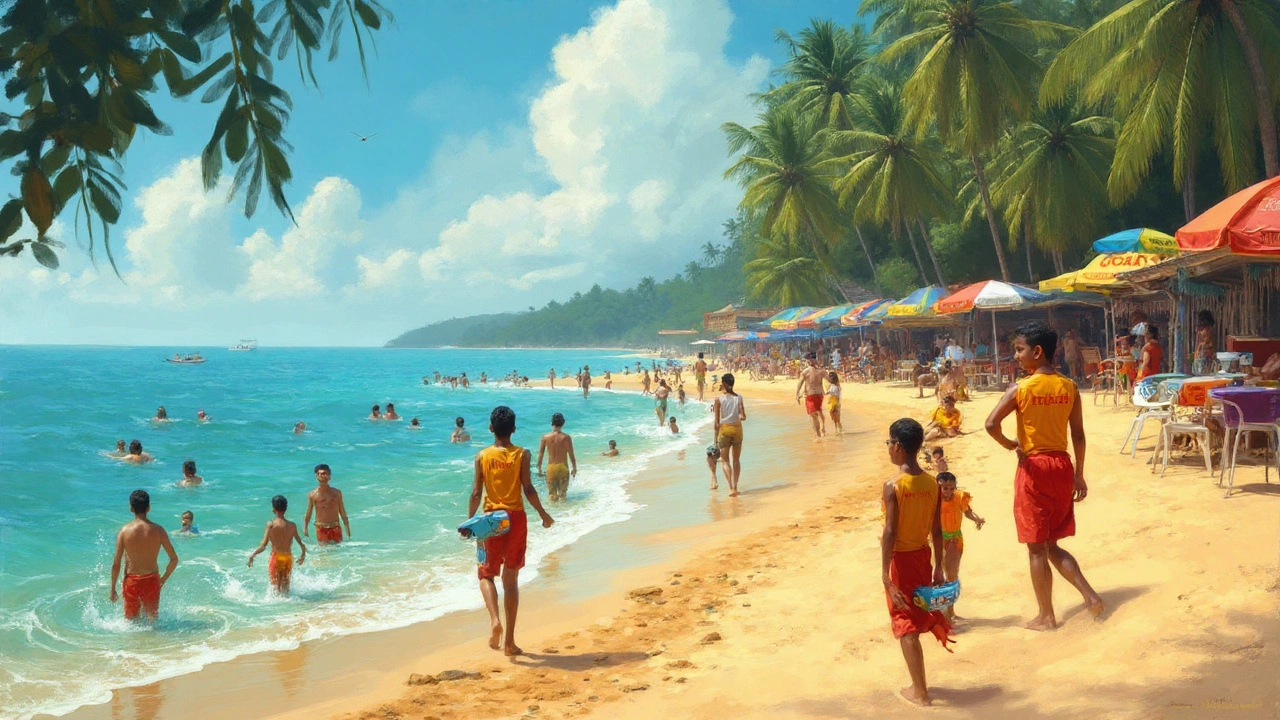
If you picture golden sand and endless blue water, you've probably thought about Goa. But once you land and finally stare at the Arabian Sea, the question hits—can you actually swim here? Plenty of people assume all Goa beaches are open playgrounds for swimmers, with warm tropical water calling you in. The truth? It’s far more interesting. Goa’s coastline stretches about 100 kilometers, but not every stretch is equally friendly for swimming, and timing (even time of day) can change the whole picture. There’s an unexpected level of detail to know before you set foot in the surf—some spots are as gentle as a heated pool, while others have stories the lifeguards would rather forget. Let’s get into it.
How Safe Are Goa Beaches for Swimming?
First thing you’ll notice: Goa’s beaches all look tempting but don’t act the same. The biggest safety factor is the season. From October to May, Goa’s swimming beaches are at their friendliest. The monsoon, which runs from June to September, flips the script. During these months, lifeguards actually ban swimming on most public beaches—rough currents and high waves can pull even Olympic swimmers under. The Tourism Department tracks beach incidents, and while Goa sees millions of visitors a year, an average of 50-60 drowning cases are reported yearly, mostly in the monsoon season and often involving folks who ignored red flags from lifeguards. So, rule number one: never swim during the monsoon. The coast literally transforms from holiday heaven to something the locals steer clear of for good reason.
Even in the dry season, you need to check the flag at the lifeguard station before diving in—red means don’t swim, yellow means swim with caution, and green is the all-clear. Lifeguards patrol the main beaches like Calangute, Baga, Colva, and Palolem, but if you venture to more remote sands, you might be on your own. The riptides can sneak up at places like Morjim or parts of Candolim, especially if you’re used to sheltered UK bays or the Mediterranean’s predictable swell. In fact, in 2023, the Drishti Marine services (Goa’s lifeguard agency) reported a spike in near-drownings because tourists underestimated the power of the surf near river mouths and rocky areas.
Here’s something else people don’t know: the shape of the beach and the direction of the wind have a huge impact. Beaches with a gentle, sloping shoreline (like Palolem) tend to have smaller, safer waves. Others, like Anjuna or Vagator, have sudden drop-offs. The tides matter, too—a rip current can be hiding where you’d least expect. Local tip: ask a shack owner, watch where others are swimming, and stay within sight of a lifeguard—Goan lifeguards are trained with the latest rescue gear and often know which patch is safe on any given day.
If you’re traveling with kids or older family, beaches like Benaulim and Majorda tend to be less crowded and have fewer strong undercurrents. Early mornings are calmest, both in water and crowds, and if you hit the sea before 10 am, you’ll enjoy glassy surf and more hands-on attention from lifeguards. Basically, the trick is to treat Goa’s beaches with the same respect you’d give a new city—you wouldn’t cross a busy road with your eyes closed. Same energy here.
| Beach Name | Swim Safety Rating | Lifeguard Presence | Best Swimming Months |
|---|---|---|---|
| Calangute | Good | High | October - May |
| Baga | Good | High | October - May |
| Palolem | Excellent | Moderate | October - May |
| Anjuna | Moderate | Low | October - May |
| Morjim | Moderate | Low | October - May |
| Colva | Very Good | High | October - May |
| Arambol | Very Good | Moderate | October - May |
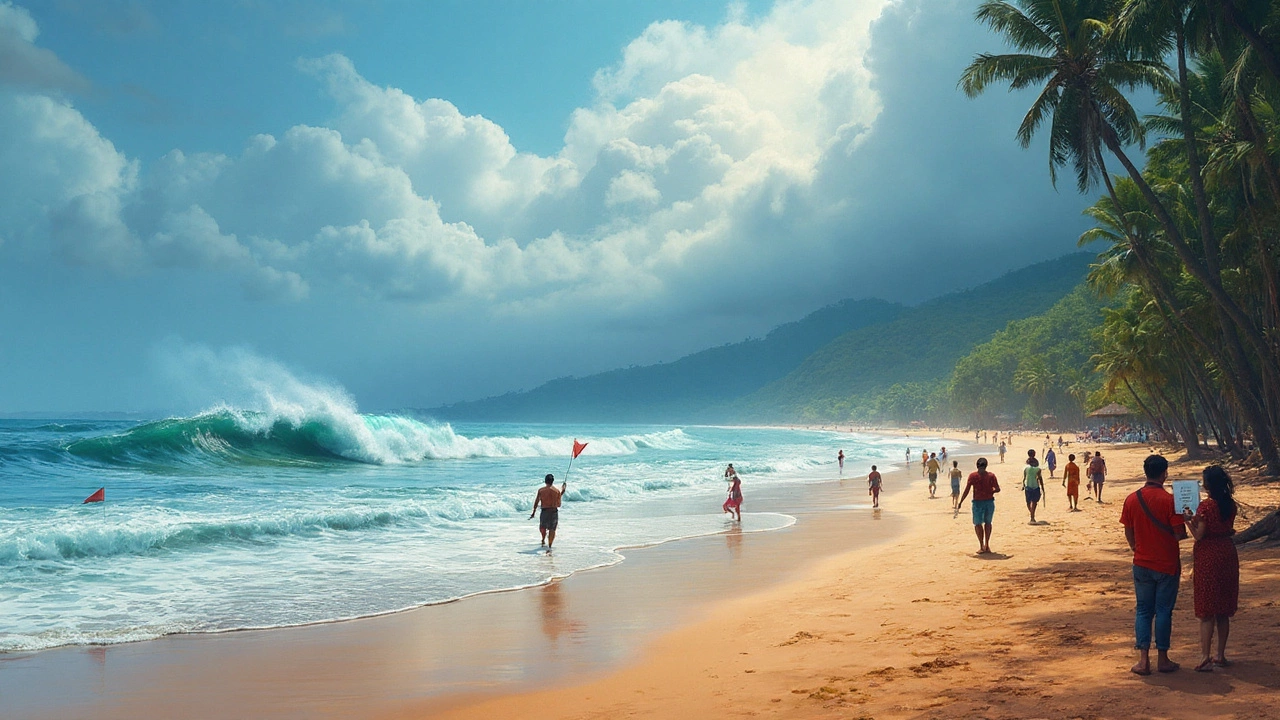
What Makes Some Goa Beaches Better for Swimming?
Not all beaches are created equal, even in paradise. The north of Goa is famous for the party scene—think Calangute and Baga—but they also get some rough waves, especially where the beaches meet river mouths. One reason: tidal flows can stir up unpredictable rips. That said, these big names have top lifeguards, the most warning flags, and loads of people swimming safely every day, so they end up with fairly good swimming records.
South Goa, on the other hand, is quieter and known for longer stretches where the water is usually calmer. Palolem is the classic poster child for safe swims. The bay is gently curved, the sand slopes slowly, and you’ll spot lifesavers on duty. Colva and Benaulim are similar—lots of locals trust these spots for kids’ swimming lessons and relaxing dips.
Worried about jellyfish or pollution? Most Goa beaches don’t have major issues. On rare days, especially after storms or in the monsoon, jellyfish can show up—Portuguese man o’ war sightings pop up in news every year or two, but lifeguards quickly raise flags and alert people to stay out. Pollution is getting better thanks to huge clean-up efforts. In 2024, Goa’s famous Miramar beach and Palolem both received the Blue Flag certification, a legit global eco-label for water quality and environmental safety. That’s a big deal, and it means these spots get tested for things like bacteria, litter, and general hygiene—so you’re not just swimming in the unknown.
If you’re picky about crowds, stick to quieter stretches like Butterfly Beach—though you sacrifice lifeguards and quick help in an emergency. It’s a sweet spot for experienced swimmers, but if you’ve got kids or just want to chill without worry, the most popular (and patrolled) beaches are best.
The beach layout changes the whole vibe. Big open beaches with minimal rocks (like Candolim) are great for body surfing. Smaller bays and coves, such as Agonda or Patnem, have shallower water and brighter, clearer sand—plus fewer jet ski operators creating rogue waves near the swimming line. The local government actually fines operators who pull water sports gear into swimming zones, but it’s always smart to do a quick scan and swim away from crowds on banana boats or parasailing ropes.
Some beaches, like Mandrem, attract international yoga groups and swimmers who want quiet mornings and less drama. The sunsets are magic, the sand is clean, and the water is usually flat unless there’s an off-season storm. Locals often use these beaches for their own morning dips—the best sign a place is swimmable is seeing Goans actually in the water, not just the tourists.
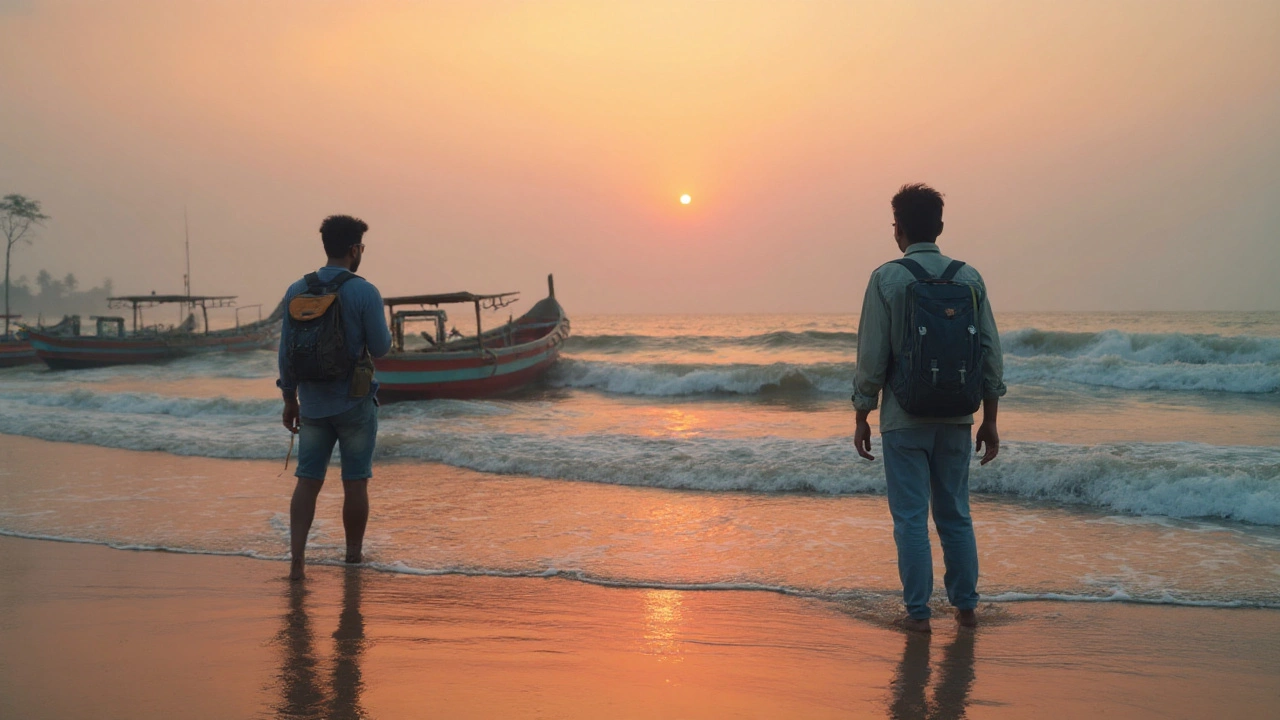
Tips for Safe Swimming in Goa and What to Watch Out For
Swim flags aren’t just decoration. Red means stay out—period. Yellow means conditions can change fast, so stick close to shore and where you see others. Green gives you the all clear, but you still need to look out for sudden drops or clumps of rocks below the surface. Surfing and swimming mix fine on some beaches, like Arambol, but always give boards lots of space. After a big night, avoid swimming hungover—alcohol is a big factor in beach accidents, and lifeguards mention it every season.
Stick to these tips for an easy swim:
- Swim during daylight hours. Goa’s beaches become less safe after sunset, with fewer lifeguards and less visibility.
- If you feel a strong pull or current, don’t fight it. Let it take you sideways until you’re out, then swim to shore at an angle.
- Always check with locals if you’re planning a dip in a new spot. Shack owners, regular swimmers, or even fishermen usually know the safest patch that day.
- Watch out for water sports activity—swim at least 100 meters away from jet skis, boats, or parasail lines.
- Remember that beach shacks often close during the monsoon. Even a short walk for help can take time if you’re caught out in rough weather.
If you’re worried about water quality, the Blue Flag beaches get tested at least once a fortnight. The Goa State Pollution Control Board posts updates, but a good tell is water clarity—cloudy or litter-filled water isn’t worth the risk. For families, Colva, Palolem, and Benaulim are standouts for both safety and facilities. Solo travelers often love Mandrem or Agonda for open water swims.
Sharks? Zero attacks on record. Saltwater crocs? Only spotted deep inside the estuary, not at public beaches. Sea snakes? Rare, and they don’t bother swimmers. The real risks in Goa’s sea are human—untrained swimmers, ignoring the flags, and venturing out solo to wild beaches without telling anyone. Bring a friend, keep the lifeguard in your line of sight, and make the most of the legendary Goan coast.
Bored of the usual? Try a sunrise swim at Palolem or a sunset dip at Colva when the crowds thin out but the water still feels like a warm bath. For the ultimate chill, floating on your back with the sun on your face, South Goa’s beaches are about as easy as swimming gets in India. Reliable, clean, and beautiful—when you pick the right beach and respect the ocean, Goa’s waves are just waiting for you.
